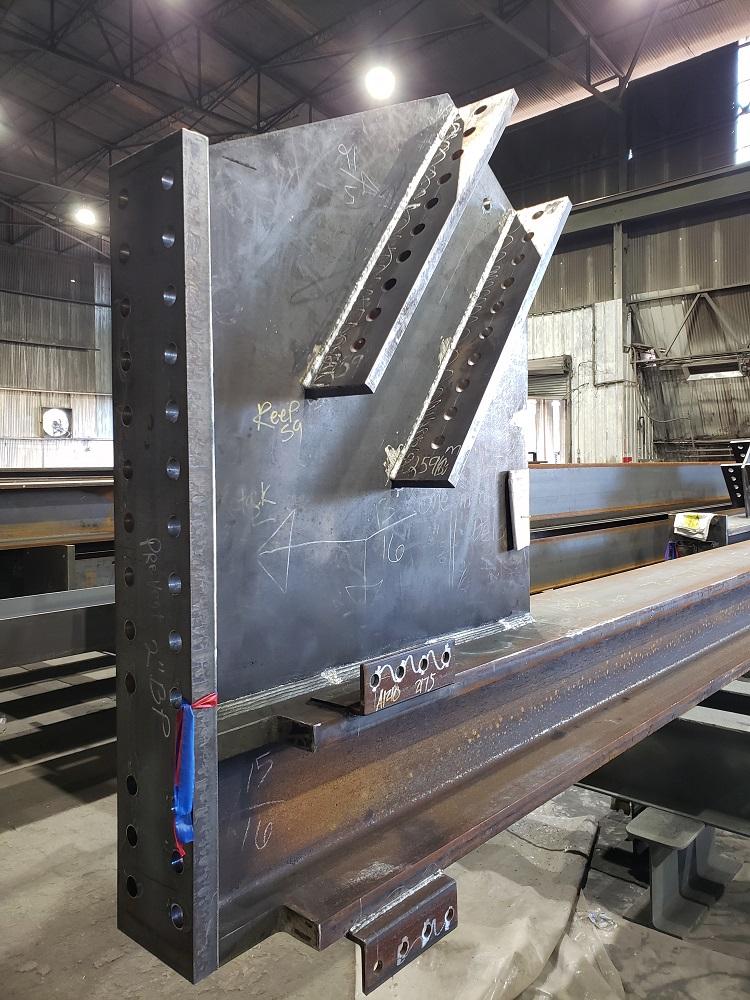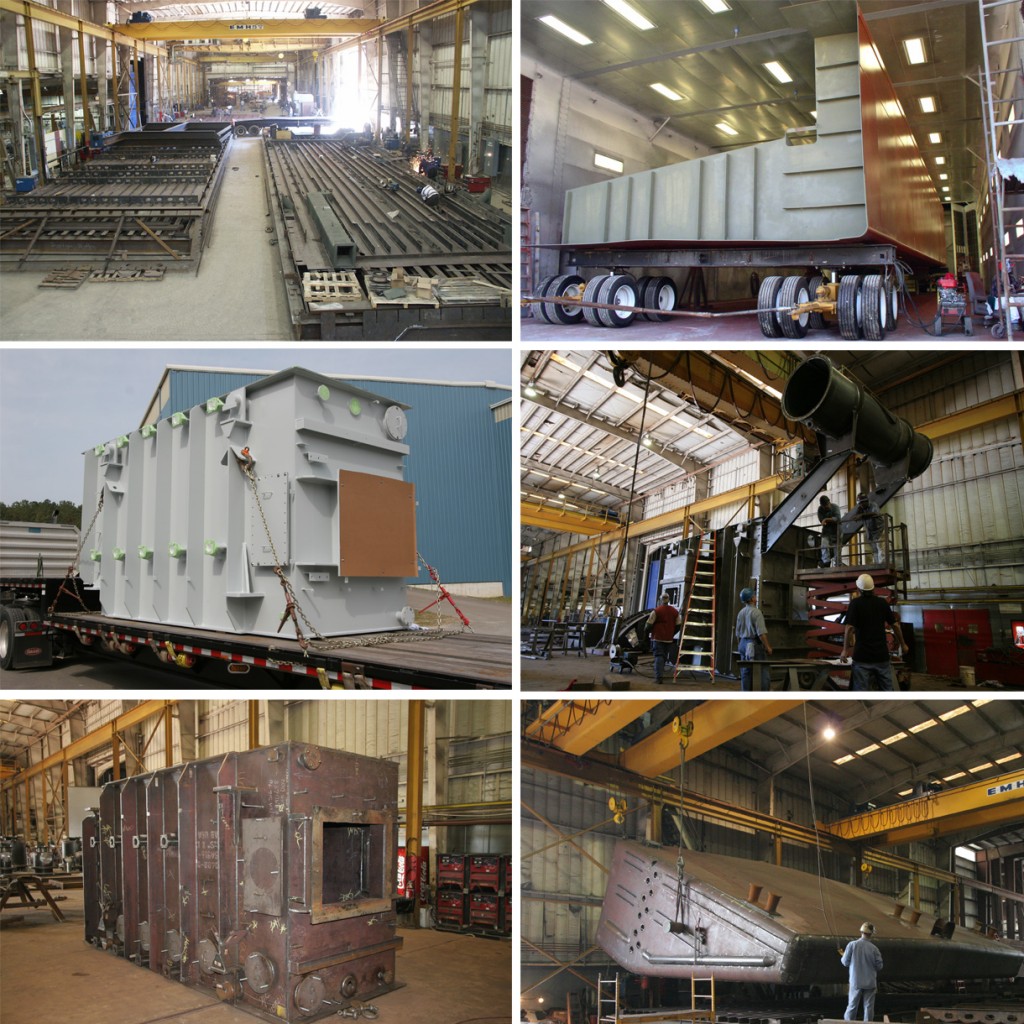Metal Fabrication Melbourne: Precision Design for All Requirements
Metal Fabrication Melbourne: Precision Design for All Requirements
Blog Article
Comprehensive Analysis of Cutting-Edge Techniques in Steel Fabrication Industry
As the steel manufacture sector proceeds to develop, the integration of advanced techniques has actually become crucial for staying affordable and fulfilling the needs of modern production requirements. In this vibrant market where innovation plays a crucial function, understanding the nuances of these sophisticated techniques is not simply an alternative yet a necessity for those looking to forge in advance in the ever-evolving globe of steel manufacture.
Laser Reducing Innovations
In the world of steel manufacture, laser reducing improvements have actually reinvented the precision and effectiveness of steel shaping procedures. By harnessing the power of concentrated laser light beams, producers can currently attain unmatched degrees of accuracy when cutting via different kinds of metals. This technology allows intricate designs to be carried out with very little product waste, making it a cost-effective remedy for markets needing high accuracy parts.
Among the vital advantages of laser cutting is its ability to take care of a variety of materials, consisting of stainless steel, aluminum, and carbon steel, easily. The procedure creates tidy, burr-free sides, eliminating the need for additional completing actions. The non-contact nature of laser reducing reduces the threat of material contamination, resulting in higher quality end products.
Moreover, laser cutting equipments can be set to make swift, exact cuts, substantially lowering manufacturing time compared to standard cutting techniques. This speed and accuracy make laser reducing particularly ideal for automation settings where efficiency is vital. As modern technology remains to advancement, laser cutting is poised to play an increasingly essential role in the steel construction sector.

CNC Machining Innovations
The advancement of CNC machining technologies has actually introduced a new age of precision and efficiency in the steel manufacture industry. Computer System Numerical Control (CNC) equipments have actually transformed steel construction by supplying exceptional precision and repeatability in the manufacturing process. steel fabrication melbourne. One of the essential technologies in CNC machining is the integration of sophisticated software application systems that enable real-time monitoring and adjustments, bring about enhanced performance and quality assurance
In addition, the advancement of multi-axis CNC makers has actually permitted the manufacture of complicated steel elements with complex designs that were previously challenging to generate. These equipments can perform a wide variety of machining procedures, including milling, boring, transforming, and grinding, all with high degrees of precision.
In addition, the incorporation of automation and robotics in CNC machining has streamlined production processes, minimized preparations, and lessened the margin of mistake. This assimilation of advanced modern technologies not only improves efficiency yet additionally makes certain consistent top quality across all produced steel components. To conclude, CNC machining developments remain to drive innovations in the steel manufacture market, setting new standards for accuracy and efficiency.
Automated Welding Technologies
Automated welding technologies have revolutionized the steel fabrication industry, boosting efficiency and accuracy in the welding procedure. These sophisticated modern technologies make use of computer-controlled systems to automate the welding process, leading to greater performance levels and improved weld quality. Among the crucial benefits of automated welding is the capacity to carry out complex welds with regular accuracy, lowering the likelihood of mistakes and rework.
Robot welding systems are at the center of automated welding technologies, using unequaled speed and accuracy. These systems can deal with a wide variety of welding tasks, from simple to complex, with convenience (metal fabrication melbourne). By utilizing innovative sensing units and software, robotic welders can adapt to variations in material and joint geometry, making sure an attire and trusted weld
Furthermore, automated welding technologies boost work environment safety and security by reducing the exposure of human welders to dangerous fumes and intense warmth. As the steel construction sector proceeds to evolve, integrating automated welding innovations will be vital for companies seeking to remain affordable and fulfill the expanding demands for high-quality bonded items.
Robotics Assimilation in Manufacture
Making use of robot systems in construction processes has come to be a crucial method for enhancing performance and precision in modern production atmospheres. Robotics assimilation in steel construction offers a myriad of benefits, consisting of boosted efficiency, boosted quality control, and enhanced security actions. These sophisticated robot systems are furnished with sophisticated sensing units and shows capacities, enabling them to do detailed jobs with a high degree of accuracy and repeatability.
Among the vital advantages of robotics integration in steel construction is the capability to automate content repeated tasks, such as product handling, internet cutting, welding, and setting up procedures. This not only accelerates manufacturing cycles but additionally lowers the risk of human error, causing higher overall item top quality. Additionally, robots can run 24/7, considerably improving manufacturing output and conference limited task target dates.

3D Printing in Steel Manufacturing
Having actually reinvented the steel fabrication sector with robotics combination, the burgeoning exploration of 3D printing in steel manufacturing is positioned to further advancement the world of modern-day production techniques. 3D printing, likewise called additive production, provides unmatched layout flexibility and intricacy, making it possible for the creation of elaborate steel structures that were previously unattainable with standard manufacturing methods. By utilizing computer-aided style (CAD) software program, suppliers can specifically regulate the layer-by-layer deposition of steel material, resulting in parts with enhanced geometries and performances.
Among the crucial benefits of 3D printing in steel production is its capacity to lower material waste considerably. Unlike subtractive production procedures where excess material is cut away, 3D printing just utilizes the required quantity of steel required for the final component. This performance not just leads to set you back financial savings but also aligns with lasting production practices by minimizing ecological effect.
Additionally, 3D printing allows quick prototyping and personalization, enabling the manufacturing of little sets of complicated steel elements with brief lead times. As the modern technology continues to grow why not look here and come to be much more obtainable, its integration into mainstream steel manufacture procedures is expected to drive advancement and performance across the sector.
Final Thought
Finally, the steel manufacture market has seen considerable developments in strategies such as laser cutting, CNC machining, automated welding, robotics integration, and 3D printing. These cutting-edge technologies have transformed the means steel products are produced, causing boosted accuracy, effectiveness, and cost-effectiveness. Continued financial investment in these cutting-edge techniques is important for the market to stay affordable and meet the demands of modern-day production procedures.
As the steel construction industry proceeds to advance, the integration of advanced strategies has actually become important for remaining affordable and fulfilling the needs of modern-day production standards.One of the crucial advantages of laser cutting is its ability to handle a broad variety of materials, consisting of stainless steel, light weight aluminum, and carbon steel, with convenience.Automated welding modern technologies have changed the steel manufacture market, enhancing efficiency and precision in the welding procedure.Having actually revolutionized the steel construction industry with robotics integration, the growing expedition of 3D printing in steel production is positioned to additional development the realm of modern-day production techniques.In conclusion, the steel fabrication market has actually seen significant improvements in techniques such as laser cutting, CNC machining, automated welding, robotics integration, and 3D printing.
Report this page